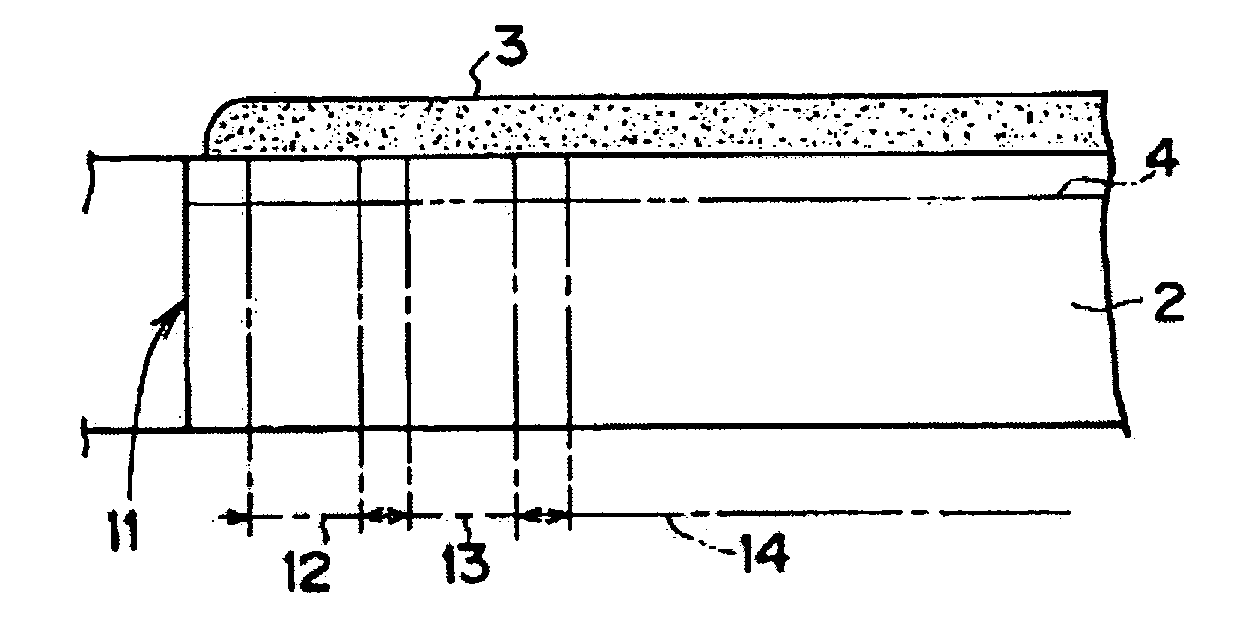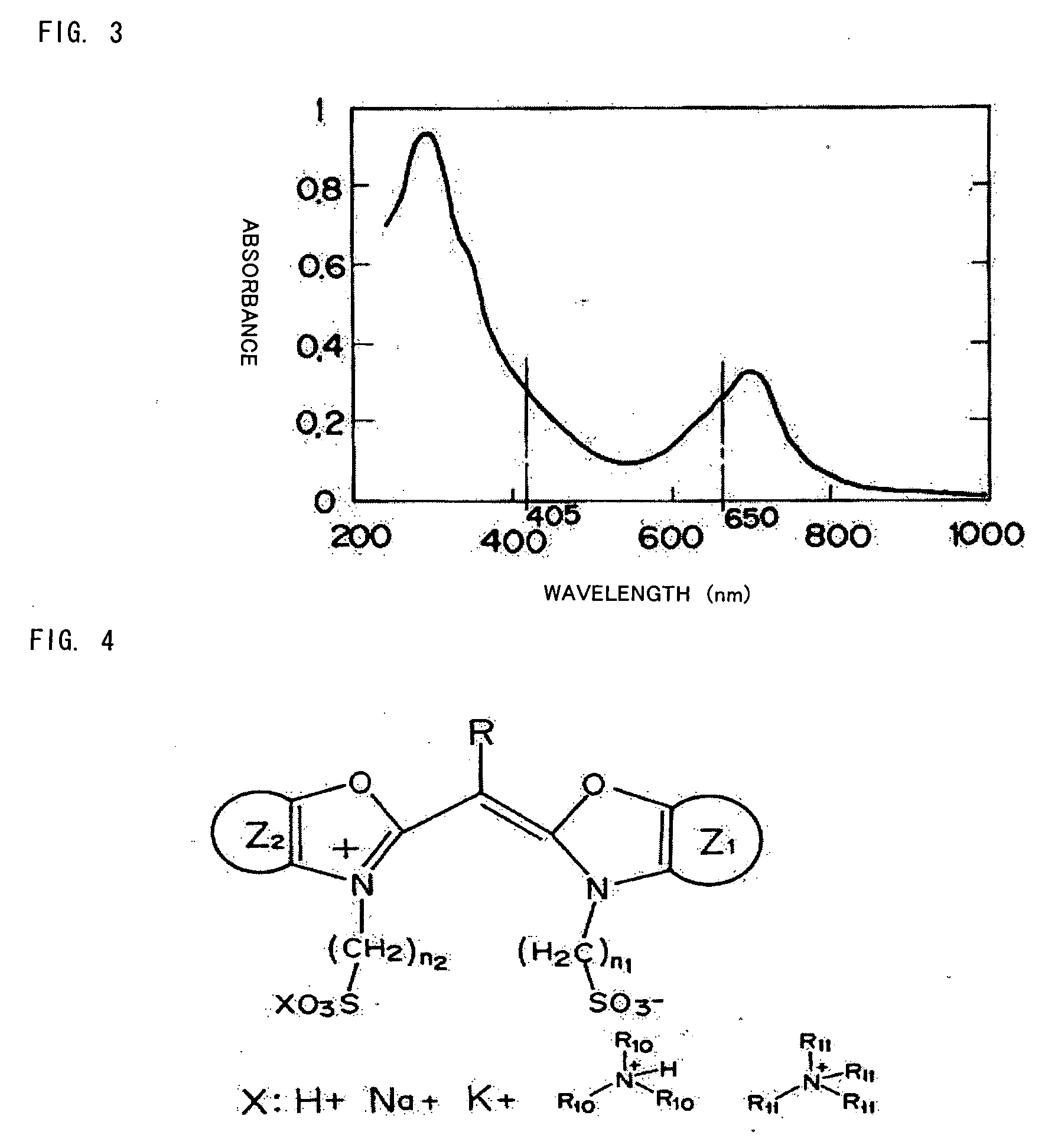Optical information recording medium and method of manufacturing the same
a technology of optical information and recording medium, which is applied in the field of optical information recording medium, can solve the problems of insufficient power of oscillator source, and achieve the effects of low power, high power and low power
- Summary
- Abstract
- Description
- Claims
- Application Information
AI Technical Summary
Benefits of technology
Problems solved by technology
Method used
Image
Examples
first embodiment
[0069] An optical information recording medium according to the invention will be explained with reference to FIGS. 1 and 2. Note that portions same as those in FIGS. 14 to 17 are denoted by the identical reference numerals and signs, and detailed descriptions of the portions are omitted.
[0070] A two-dimensional structure and a sectional structure of this optical information recording medium are the same as those of the conventional optical information recording media 1 and 20 shown in FIGS. 14 and 15 (or 16). However, a dye used for the optical recording layer 3 is different form that used in the conventional optical information recording media 1 and 20.
[0071]FIG. 1 is a diagram explaining a structural formula of a dye (a phthalocyanine dye) used for the optical recording layer 3 of the optical information recording medium according to the first embodiment.
[0072]FIG. 2 is a diagram explaining a structural formula of an example of the phthalocyanine dye (a phthalocyanine derivativ...
third embodiment
[0088]FIG. 7 is a diagram explaining a structural formula of a second dye (an additive dye, a cyanine dye) used for the optical recording layer 3 of an optical information recording medium according to the invention.
[0089] It is possible to obtain an absorption spectrum same as that shown in FIG. 6 by using both the first dye (the oxacyanine dye) and the second dye (the cyanine dye) together as a dye for the optical recording layer 3. It is possible to realize both data logging using a blue laser and BCA using a red laser.
fourth embodiment
[0090]FIG. 8 is a diagram explaining a structural formula of a second dye (an additive dye, a phthalocyanine dye) used for the optical recording layer 3 of an optical information recording medium according to the invention.
[0091] It is possible to obtain an absorption spectrum same as that shown in FIG. 6 by using both the first dye (the oxacyanine dye) and the second dye (the phthalocyanine dye) together as a dye for the optical recording layer 3. It is possible to realize both data logging using a blue laser and BCA using a red laser.
[0092]FIG. 9 is a graph of absorbance of the second dye (the phthalocyanine dye) with respect to a wavelength of the laser beam 9 in the case in which M is Cu (copper) and A1 to A4 are phenyl radicals in FIG. 8. Since the dye has an absorption capability near a wavelength 650 nm or 780 nm, the dye is capable of absorbing energy of a red laser. Thus, it is possible to divert the BCA device for a CD or a DVD (the writing device for BCA) to the optical ...
PUM
| Property | Measurement | Unit |
|---|---|---|
| wavelength | aaaaa | aaaaa |
| wavelength | aaaaa | aaaaa |
| wavelength | aaaaa | aaaaa |
Abstract
Description
Claims
Application Information
 Login to View More
Login to View More - R&D
- Intellectual Property
- Life Sciences
- Materials
- Tech Scout
- Unparalleled Data Quality
- Higher Quality Content
- 60% Fewer Hallucinations
Browse by: Latest US Patents, China's latest patents, Technical Efficacy Thesaurus, Application Domain, Technology Topic, Popular Technical Reports.
© 2025 PatSnap. All rights reserved.Legal|Privacy policy|Modern Slavery Act Transparency Statement|Sitemap|About US| Contact US: help@patsnap.com



